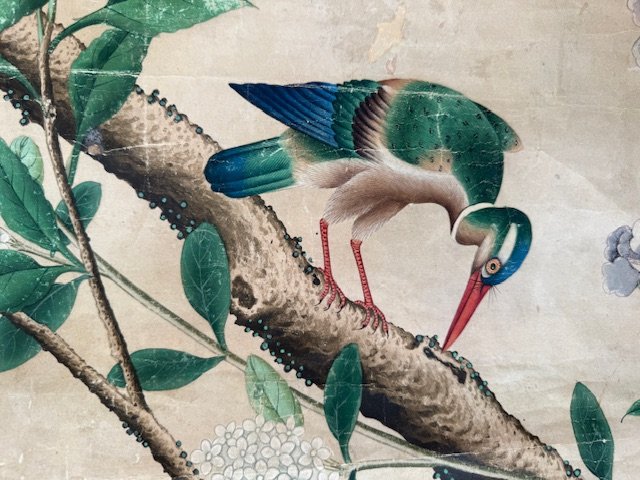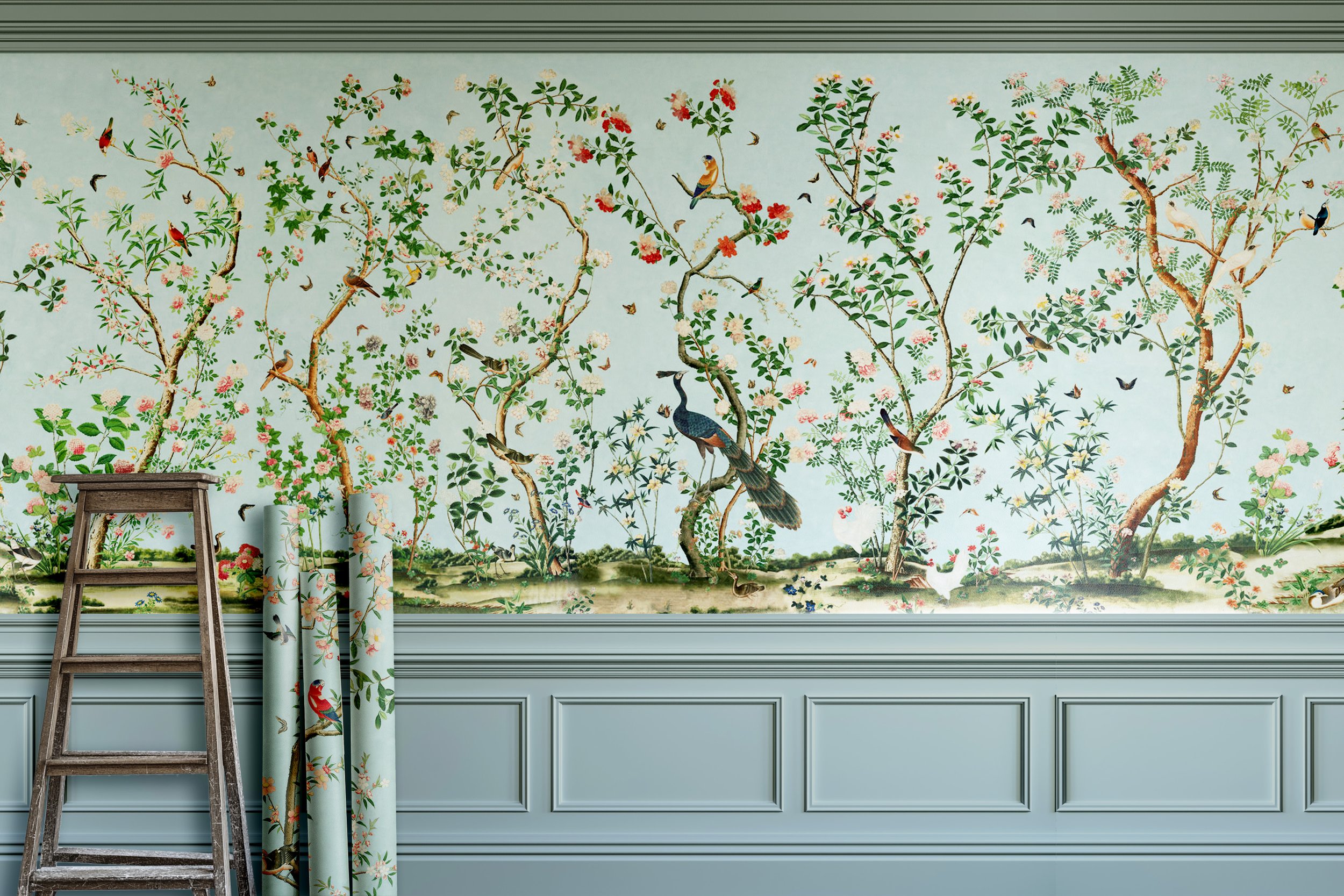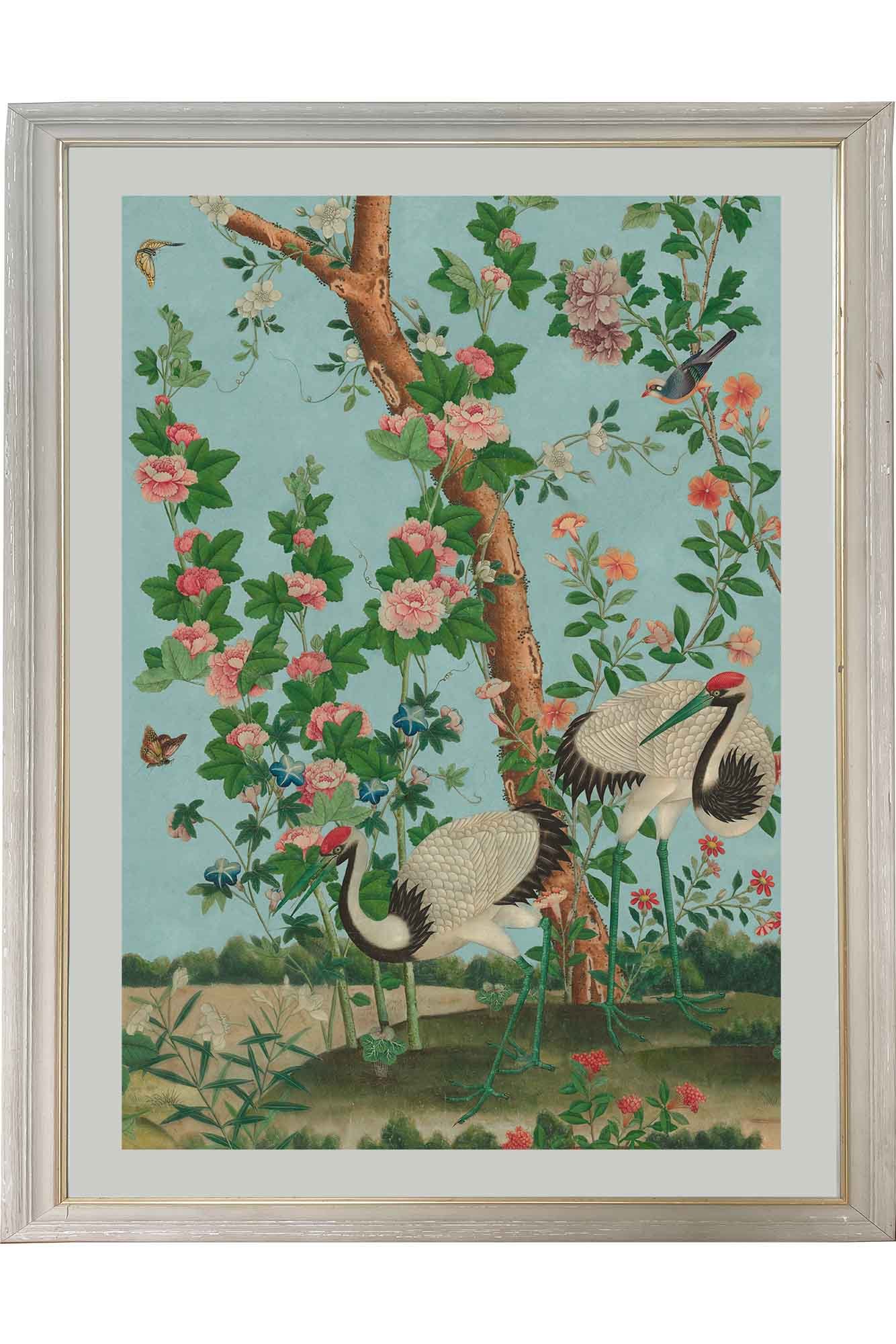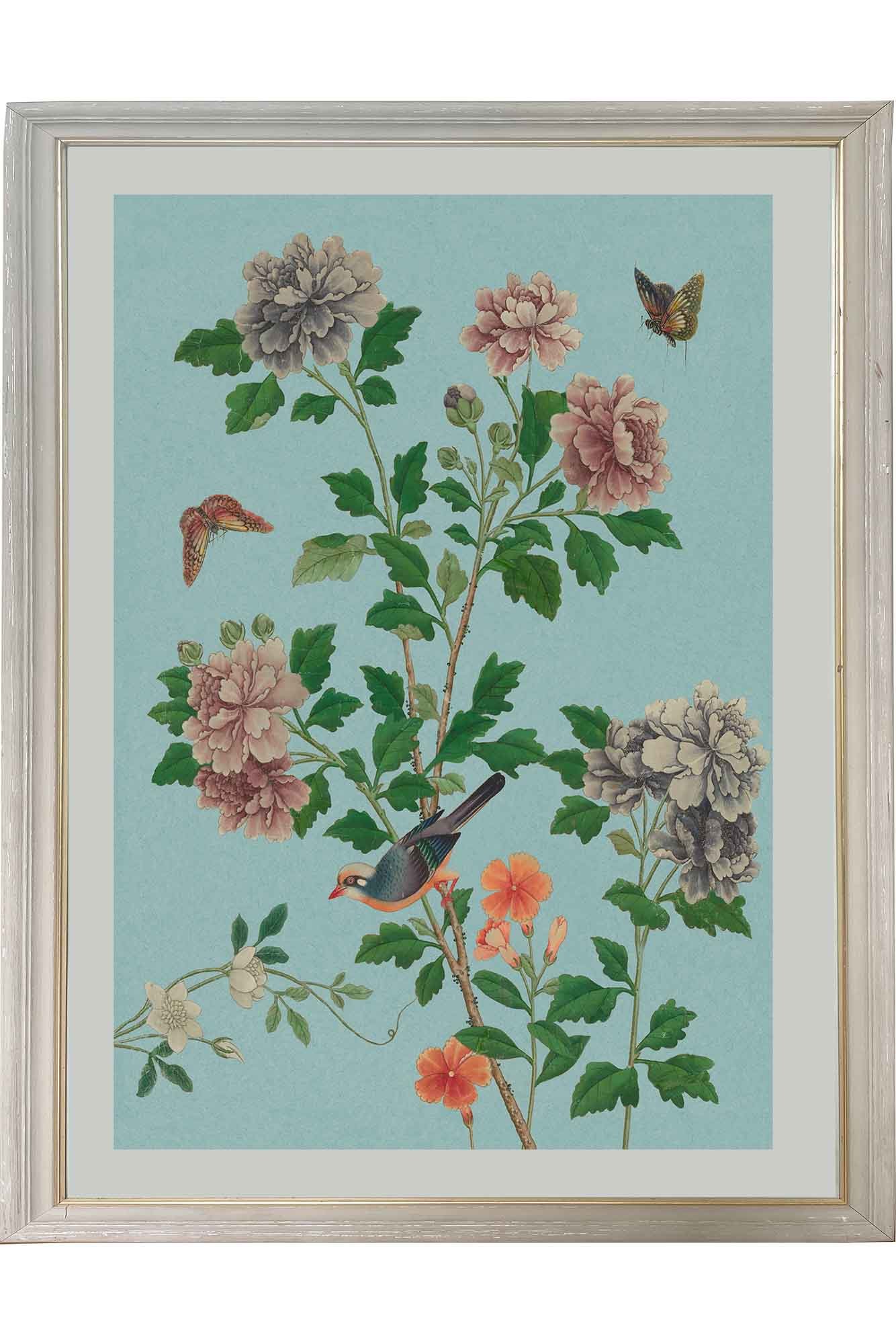
Chinese Garden Collection
The Chinese Garden is a specially curated collection of authentic 18th century designs recreated from our wonderful archive of original, hand painted Chinese wallpapers.
‘Furnished with the finest chints, painted taffetas, India paper, and decker work, and profusion of rich China and Japan, I could almost fancy myself in Peking.’
Attributed to Countess of Jersey,Osterley Park, 1772
Wallpaper
Inspired by a late 18th Century Chinoiserie wallpaper from our archives, this beautiful design highlights the artistic skill and attention to detail from this fascinating period in our history.
The Chinese Garden wallpaper is available as a bespoke option only. ( Image is for example purposes only. ) Samples are available under murals.
Please contact us for further information.
Murals
The Peacock Mural displays all the detail and finesse of the original late 18th Century Chinoiserie wallpaper but is complete within a scale of 2 x 3 metres

200cm x 300cm (78x118”)
Large Panels
Our Large Chinese Garden Panels have been carefully chosen from our favourite sections of the original design. Each is a beautifully self contained, individual image, embellished with a silk effect border. They look magnificent displayed singly, or as a magnificent set of two or even three different designs.
110cm x 210cm (43 x 82”)
Small Panels
A smaller format of the larger panels for use on the walls, framed or as a screen.
105cm x 55cm (41 x 21”)
Fine Art Prints
A beautiful series of fine art prints featuring all the detail and finesse of our Chinese Garden wallpaper.
41cm x 60cm (16 x 23”)
History & Provenance
This beautiful original wallpaper is finely and delicately painted with organic water based pigments, including malachite, azurite and rich red carmine which were applied to large sheets of Chinese paper stretched onto panels. The design of birds, flowers and butterflies is typical of the second half of the 18th Century Chinoise style of painting
Chinese wallpaper was a Western confection, ordered and made on commission and brought back to Europe as private trade by officers of the East India Company. It was highly fashionable and greatly sought after to embellish the private apartments of the rich and the aristocracy. Brighton Pavillion is a superb example.

















































